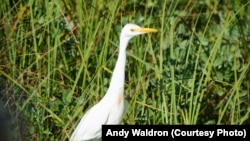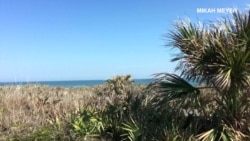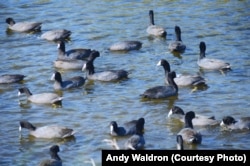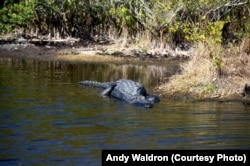When people think of Cape Canaveral, Florida, they usually associate it with America’s space program. The Kennedy Space Center is where NASA launched the Saturn V rocket that put the first men on the moon in 1969.
The real Florida
Since then, the area has been the site of many more launches into space. But as national parks traveler Mikah Meyer recently discovered, there is also an abundance of wildlife and other natural wonders to explore and admire in the immediate vicinity.
At Canaveral National Seashore for example, almost 40 kilometers (24 miles) of undeveloped beach is home to more than 1,000 types of plants and more than 300 bird species.
Take a ride with Mikah
Since ancient times, this barrier island has provided sanctuary to many threatened and endangered species, including sea turtles who nest on its shores.
Mikah, who’s on a mission to visit all of the more than 400 sites within the National Park Service (NPS), found it fascinating that Canaveral National Seashore makes up the largest stretch of undeveloped beach on Florida's East Coast.
“As somebody who drove down the entire coastline, I can tell you that there has been development along the entire Florida coast, such that everywhere either has a house or a condo or a hotel, and this is one stretch where you can go and there is no development,” he said.
That lack of development attracts many locals and tourists, who come to enjoy nature in its most primitive form. And without the pollutants that normally result from development, the water is cleaner too, Mikah noted. That, in turn, attracts fish... and fishermen.
Walking along the dunes during his recent visit, he noted how the waters were “just inundated with fishermen… as far as the eye can see... even though it was a weekday.”
Ancient landscapes
At the NPS sister park, Merritt Island National Wildlife Refuge, Mikah and his companion Andy Waldron traveled along the Black Point Wildlife Drive around several shallow marsh impoundments and through pine flatwoods.
“We saw a number of alligators of all sizes and sorts,” Mikah explained. “And a bunch of birds, not just hanging out but actively running across the water and dipping their heads in and eating and catching fish,” he added.
He also saw a wild boar in the distance, wading through the shallow water, but Mikah was most impressed with the 'gators living so close to the ocean.
“It was very interesting the ecosystems that they live in, the natural versus salt water," he remarked. "And just seeing a live ‘gator in the wild was so cool because so often we see them in zoos or contained areas.”
Mikah and Andy strolled along a wooded trail and a pristine, undeveloped shoreline, much like the first natives and early settlers must have done. They stayed just a short while, but long enough to imagine just how those lands and waterscapes must have seemed to all who came before them not too long ago.
Mikah invites you to learn more about his travels in Florida and all across America by visiting his website, Facebook and Instagram.













